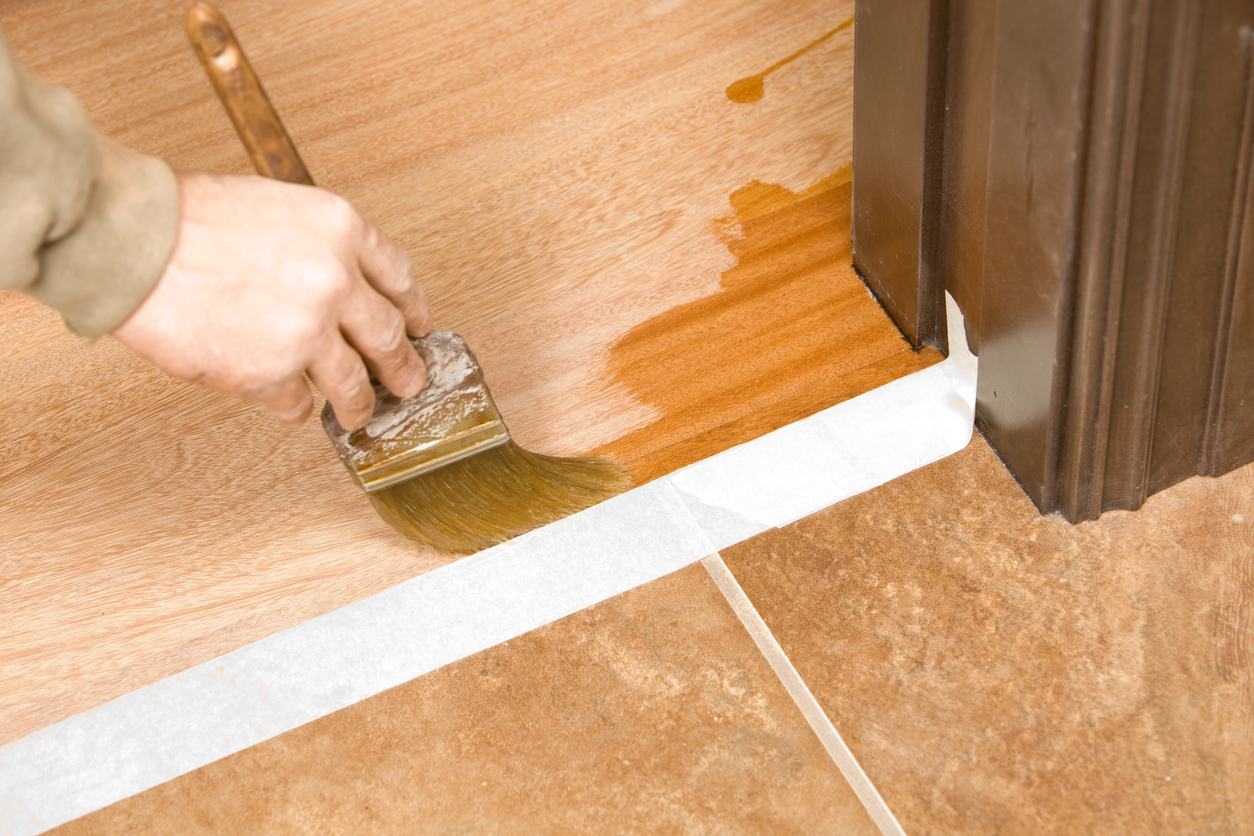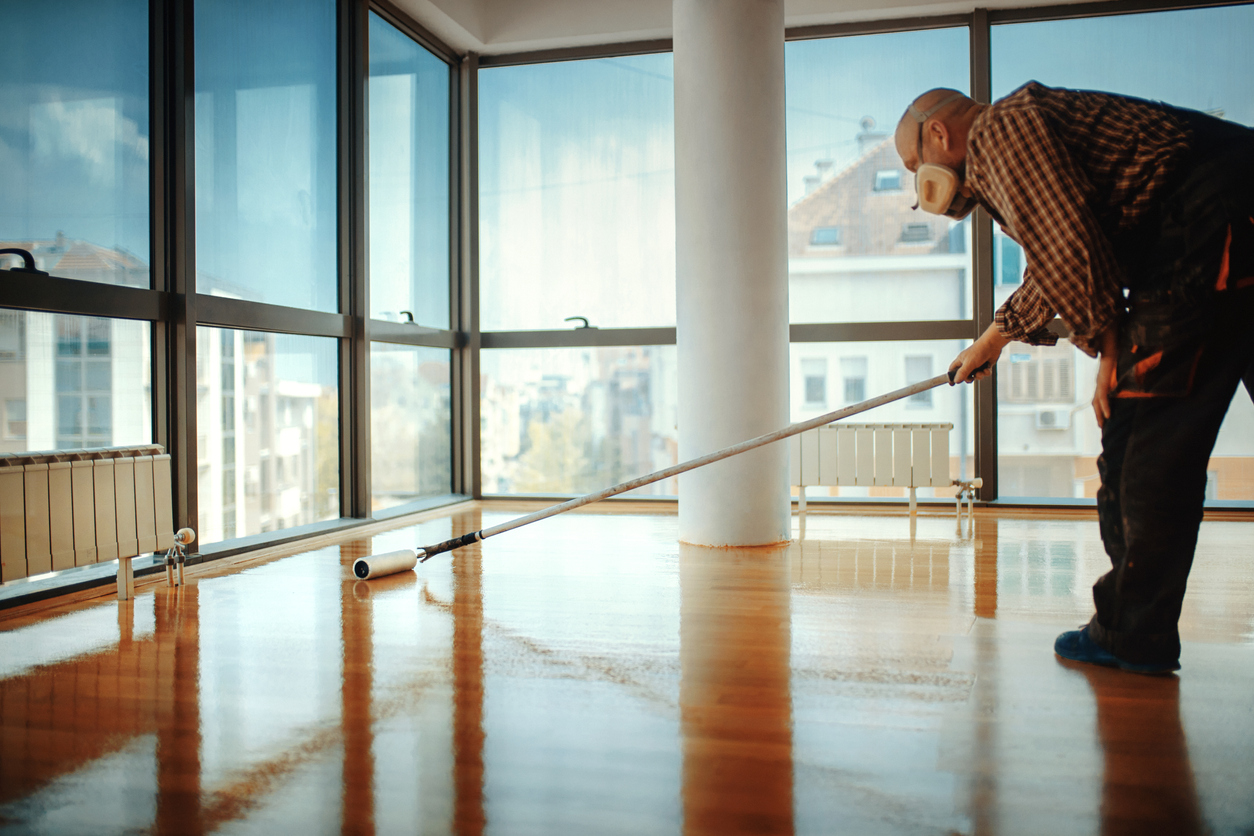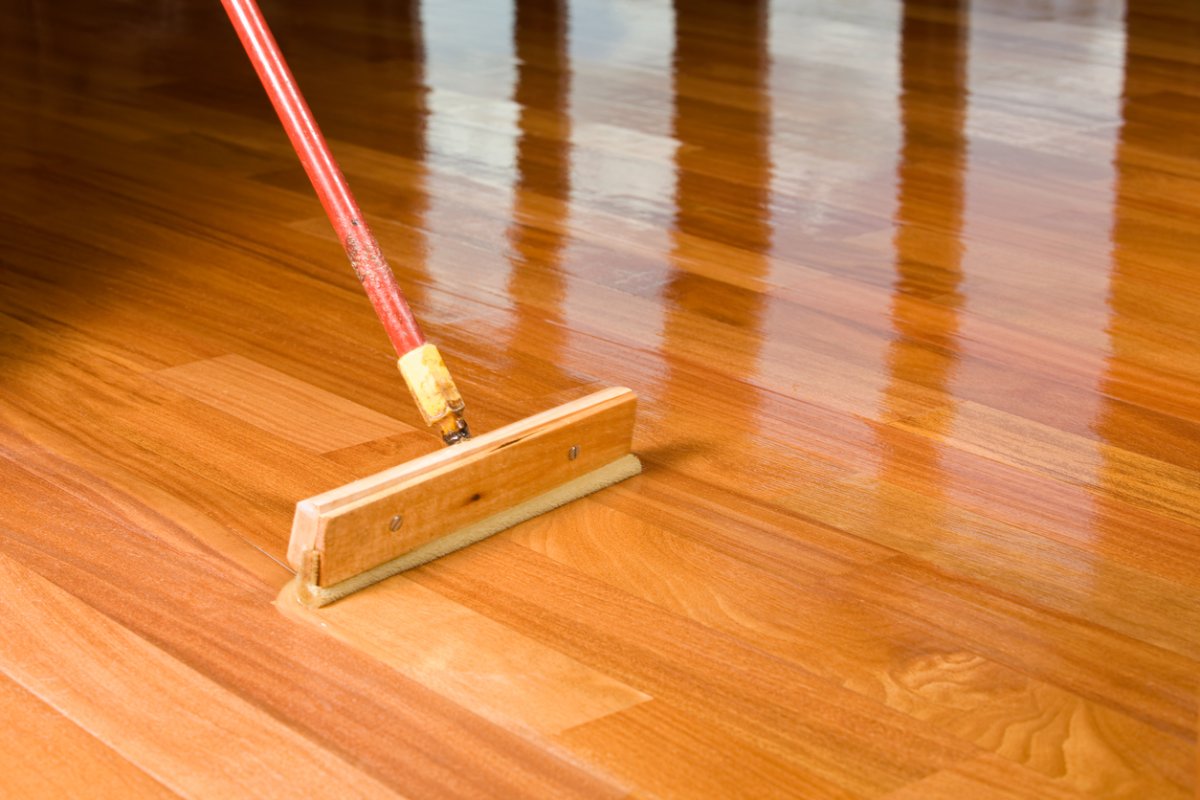We may earn revenue from the products available on this page and participate in affiliate programs. Learn More ›
Q: I am reviving an old oak floor, and polyurethane seems like an attractive, hard-wearing finish. However, I’m finding conflicting info on polyurethane drying time. Some online advice varies anywhere from 2 hours to 2 days. So, how long does polyurethane take to dry?
A: Confusion about how long polyurethane takes to dry is understandable. Polyurethane wood finish is an excellent product for many projects, but the type of polyurethane, how it’s applied, and the material it’s applied to all factor into dry time. The most reliable answer invariably comes from the manufacturer’s packaging, and this should always be followed as closely as possible for best results.
However, getting that information before you buy a can of polyurethane sealer isn’t always easy, so a couple of different chemistries will be explained below, as well as things like “dry to the touch,” the difference between “dry” and “cured,” and how long to wait between applying coats of polyurethane.
It depends what you’re applying polyurethane on.
Both the type of wood and whether it has been pre-treated will make a difference in how long a polyurethane finish takes to dry.
Softwoods like pine and spruce have an open-grain structure that typically soaks up more of a finish than hardwoods like oak or mahogany. Softwoods tend to dry more rapidly, but they might require several coats to produce a high shine. Using a thinned polyurethane as a sealer helps inhibit absorption, and is an interim stage often used on both furniture and floors.
Wood stain, which also has variable drying times, can also slow the drying of polyurethane. Care needs to be taken to ensure stain and polyurethane are compatible, or else the finish could be ruined. Mixing water-based products with oil-based ones can result in either a lack of adhesion or a “milky” appearance in the final coat. If wood has been stained but the type of wood is unknown, polyurethane should be tested on an inconspicuous part of the surface before proceeding.
Applying polyurethane to raw (untreated) wood or stained wood is a straightforward process. However, previous varnishes normally can’t be over-coated successfully, so any existing varnish needs to be removed using a suitable stripper or by sanding.
RELATED: Is Varnish or Polyurethane the Right Finish for You?

The formula plays a factor.
Although each manufacturer’s formulations will impact how long it takes for polyurethane to dry, these products can generally be divided into two types: water-based polyurethane and oil-based polyurethane. Each formula contains resins dissolved in a carrier liquid, and drying times largely depend on how quickly this carrier liquid evaporates.
Water-based polyurethane
Water evaporates much faster than oil, so water-based polyurethanes dry more quickly than oil-based ones. Around two hours is common for a first coat, though wipe-on finishes (which are easy to apply over smaller surfaces, such as wood furniture) can take a little longer. After this initial drying stage, a second coat can be applied if necessary.
Water-based polyurethanes also broadly produce less odor, contain fewer environmentally harmful ingredients, and are considered easier to apply than oil-based polyurethanes. Brushes and rollers can all be cleaned with water after being used to apply water-based polyurethane.
Historically, water-based polyurethane has not been considered as durable as oil-based alternatives, but hard-wearing water-based polyurethane for floors is now widely available. It may be possible to place items on a newly finished floor after a couple of days. But the full curing time—how long it takes until the finish is completely hardened and is ready for day-to-day wear—is usually around 21 days.
Oil-based polyurethane
Oil-based polyurethanes are often around half the price of water-based products. Generally speaking, they take 4 to 6 hours to dry or to be ready for a second coat. While oil-based polyurethanes aren’t necessarily tougher than water-based alternatives, they can be more resistant to scratching.
Oil-based polyurethane, however, can give off powerful odors that can irritate airways, and they may contain both toxins and high levels of volatile organic compounds (VOCs) that have been linked with some types of cancer. Additionally, brushes need to be cleaned with solvents that have poor environmental impact.
Surfaces finished with oil-based polyurethanes can be used after around 4 days, but full cure normally takes 30 days. Even if the manufacturer’s recommended time has passed, if you can still smell the polyurethane, it probably isn’t dry.
Fast-drying formulas
Fast-drying polyurethane is available in both water- and oil-based formulas. The former will be touch dry or can be recoated in as little as an hour. The latter is usually dry to the touch in 2 hours.
Fast-drying options do tend to carry higher price tags, and care has to be taken with application. Sometimes they not only have a minimum drying time, but also a maximum. In other words they need to have a second coat applied within a certain time frame or it may not bond properly with the first. It’s important to refer to the manufacturer’s instructions on the label.

Different sheens can also have different dry times.
Polyurethane finishes are usually defined as either satin, semi-gloss, or gloss. This describes the amount of reflection they produce, which is how shiny the surface appears. The type of sheen doesn’t just tell you about its appearance, it can also have an impact on how quickly it dries.
Typically satin dries fastest. Semi-gloss takes a little longer and gloss takes the longest to dry. However, the differences are relatively minor. Certainly not as great as choosing water-based over oil-based, for example. We expect that for most people it will be more important to choose a preferred sheen rather than picking one just to save a few minutes.
Application tools and number of coats can speed up or slow down how long it takes polyurethane to dry.
Just like when applying paint to a wall, using a paint roller for polyurethane can be considerably quicker than using a brush when covering large areas. Rolling is a process that works best with water-based polyurethanes, which usually have a thinner consistency and are easier to spread. A brush tends to lay down a thicker layer, which will take longer to dry.
How many coats of polyurethane are required is another important factor, and once again our recommendation is to follow the manufacturer’s advice. Multiple coats take longer to dry, of course, but getting the correct coverage, and hence long-term durability, is usually worth the additional time involved.
Temperature and humidity are the most important ambient conditions to consider.
Temperature can affect the consistency of the polyurethane, its adhesion, and how long it takes to dry. Cold slows drying. Extreme heat can speed it up to the extent that the polyurethane becomes difficult to apply, particularly if working outdoors. Bear in mind that most exterior polyurethanes can be used indoors, but interior polyurethanes should never be used outdoors. The optimum temperature for application should be marked on the can, and is usually somewhere between 65 and 70 degrees Fahrenheit.
Humidity can also impact drying times. Not surprisingly it is water-based polyurethanes that are most affected. It may dry too quickly in low humidity, whereas it may not dry at all in high humidity. In locations where humidity is a major factor, oil-based polyurethanes are often the better choice.
How to Make Polyurethane Dry Faster
For many people a key question is not how long does it take for polyurethane to dry, but the top concern is how can polyurethane be made to dry faster. Here are a few suggestions that could speed up the process:
- Proper preparation always helps. Make sure the surface is clean. After sanding, use a cloth and/or vacuum cleaner to remove dust. Any impurities that get into the polyurethane will slow drying.
- Something as simple as choosing to work on a warm, sunny day can have an impact. The temperature is higher, and humidity is lower. For best results, both extreme cold and extreme heat should be avoided.
- Applying gentle, indirect heat can help. On small projects, a hair dryer or small household heater can be used to blow warm air across the surface (though not directly at it). Where large areas like floors are concerned, some kind of space heater can be employed.
- Naphtha is sometimes suggested as it can speed up evaporation. However, it is difficult to control and highly flammable. As a result, we would not recommend it.
- Our earlier advice bears repeating: follow the manufacturer’s instructions as closely as possible. The job will be completed more quickly, and the finish has the best chance to be both tougher and more attractive.
RELATED: Solved! How Long Does It Take for Spray Paint to Dry?


